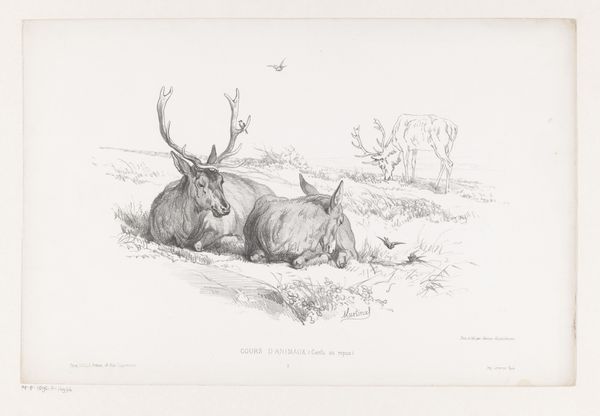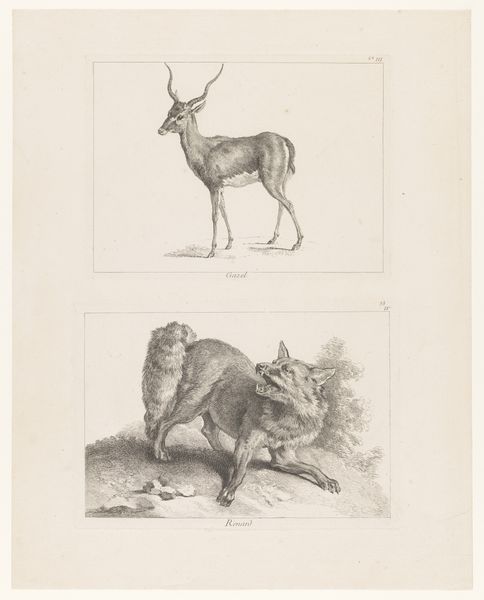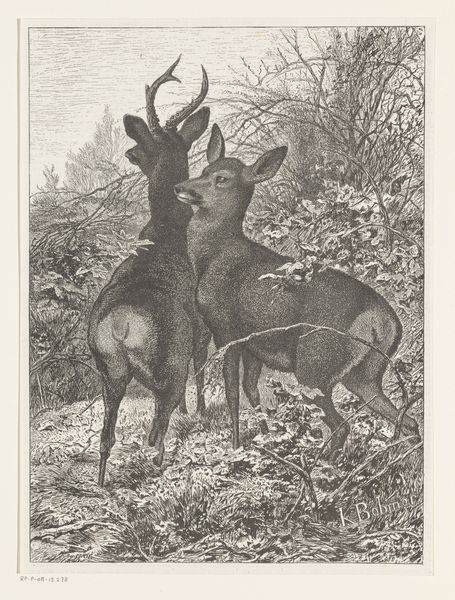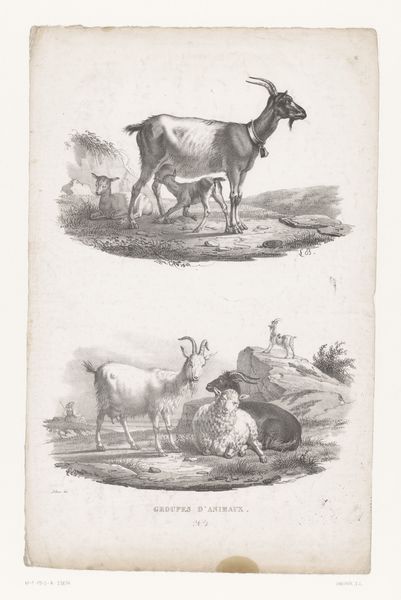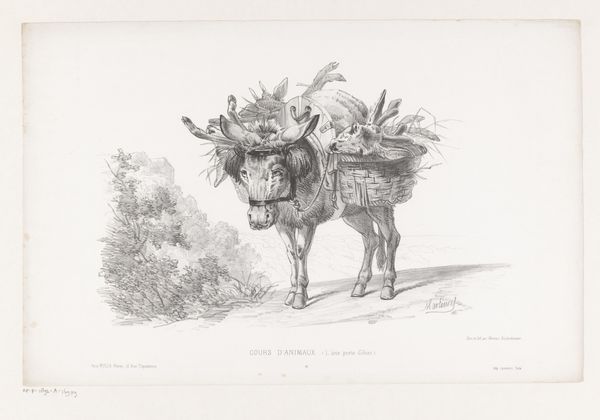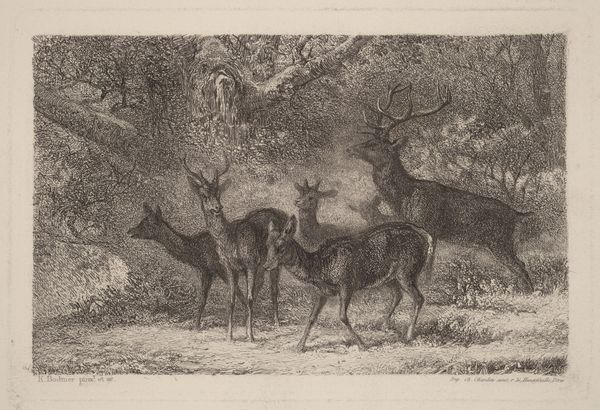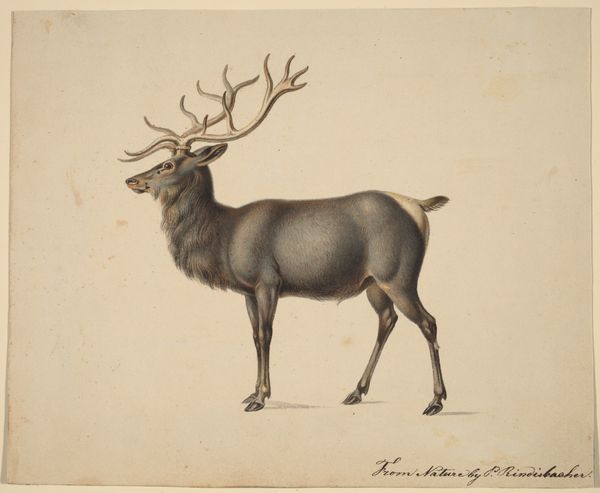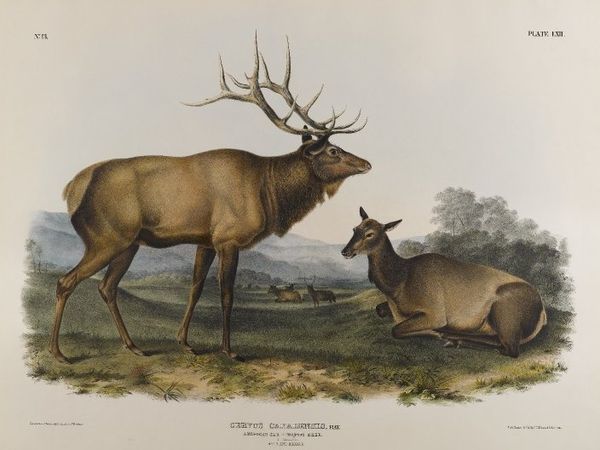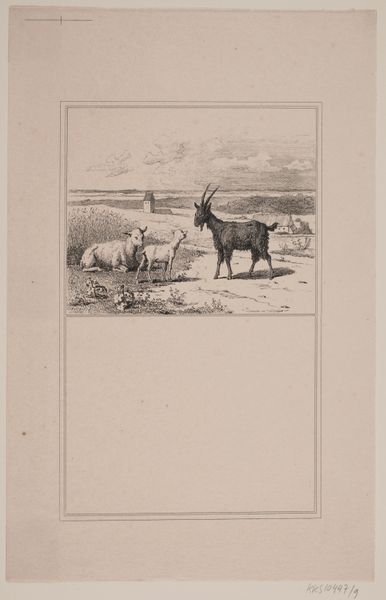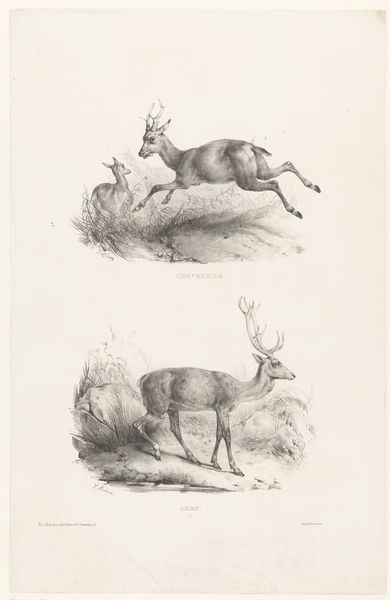
drawing, etching, pencil, graphite
#
drawing
#
animal
#
etching
#
landscape
#
pencil drawing
#
pencil
#
graphite
#
realism
Dimensions: height 321 mm, width 486 mm
Copyright: Rijks Museum: Open Domain
Curator: "Vier reeën," or "Four Deer," a pencil drawing and etching crafted between 1843 and 1844 by Victor Adam. It resides here in the Rijksmuseum, waiting to be admired. Editor: What strikes me first is how they're rendered, almost like studies. The stark white background focuses our attention on the deers' form and how the graphite captures light on their bodies. Curator: Exactly. It is deceptively simple. Look closely at the use of line and the varied pressure. Notice how it shifts to create not just form, but a sense of their delicate presence, almost like breath. The white is almost as alive as the graphite. It's all part of the atmosphere. Editor: True, it’s compelling when considering artistic labour. These drawings had function, mass reproducibility by an early etching process in a burgeoning European print market. It makes me think, did Adam consider how the means of production would dilute the experience when so easily acquired? Curator: Possibly. But it also opened the image to a wider audience. Perhaps there's a joy in knowing something intimate like a graphite mark can be democratized this way. The intimacy of the deer, observed, then etched, spread. I prefer to view them as offering an affordable encounter with a natural scene for urban eyes that maybe didn't ever get to roam a woodland, really connecting Adam’s touch to a deeper empathy through availability. Editor: Availability...consumption. I’m not completely convinced the democratization supersedes environmental realities; romantic depictions of animals such as this have always justified industrial infringements onto habitat, often with detrimental impact on animal population. There is labour beyond the drawing too, one only briefly suggested here but is deeply material to consider. Curator: A necessary counterpoint! Though maybe the tension of those contrasts is what makes it endure. It invites questions of perception, of process, and of our ever-changing relationship with the natural world. Editor: Food for thought, I’d say! An echo of then, reflecting now.
Comments
No comments
Be the first to comment and join the conversation on the ultimate creative platform.
